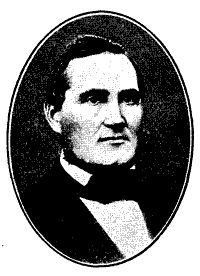Albert Lindhagen
Claes Albert Lindhagen (born July 25, 1823 in Askeby socken , Östergötland County ; † October 21, 1887 in Stockholm ) was a Swedish lawyer , member of the Swedish Reichstag , city planner and initiator of the Lindhagen plan named after him . Lindhagen was the father of Carl Lindhagen (Mayor of Stockholm 1903-1930) and the women's rights activist Anna Lindhagen .
Albert Lindhagen studied law at Uppsala University and then pursued a legal career. Shortly before his death he was a member of the Supreme Court ( Högsta domstolen ). Mainly, however, Lindhagen was an influential building politician. He was behind the new legislative proposals on health law, regulatory law, building law and fire law for the cities of the Reich and the Reich itself urban fresh water and sewage networks were connected.
Albert Lindhagen was heavily inspired by the French urban planner Georges-Eugène Haussmann and his redesign of Paris . Lindhagen was the author of the Lindhagen plan named after him from 1866, the development plan for the redesign of Stockholm from a small town to a large city. In it he laid a network of square blocks of flats across the city, separated by wide boulevards and avenues . In this development plan, for example, he made the proposal to expand Sveavägen from Brunnsviken in the north to the City Palace in the south into a 70-meter-wide boulevard like a Champs-Elysées . The Lindhagen Plan was decided in a somewhat weaker form for cost reasons, but only partially implemented. Sveavägen was only 33 meters wide and only reached as far as Kungsgatan in the south . However, some of Lindhagen's ideas were taken up and discussed again in the context of the redesign of Stockholm City ( Norrmalmsregelingen ) in the 1940s and 1950s.
Albert Lindhagen also made a name for himself in schools and training. From 1862 to 1879 he was a member of the board of directors of Stockholm's elementary schools and was instrumental in founding Stockholm University in 1878 . According to him, are Lindhagensgatan and the place Lindhagen plan in Stockholm named.
Lindhagen plan from 1866 for Norrmalm och Kungsholmen
Lindhagen plan from 1866 for Södermalm in Stockholm
| personal data | |
|---|---|
| SURNAME | Lindhagen, Albert |
| ALTERNATIVE NAMES | Lindhagen, Claes Albert (full name) |
| BRIEF DESCRIPTION | Swedish politician, member of the Riksdag and city planner |
| DATE OF BIRTH | July 25, 1823 |
| PLACE OF BIRTH | Askeby socks |
| DATE OF DEATH | October 21, 1887 |
| Place of death | Stockholm |


